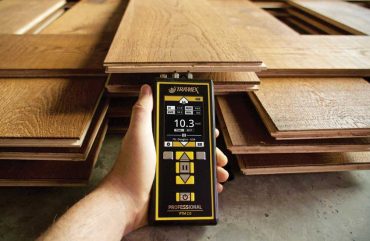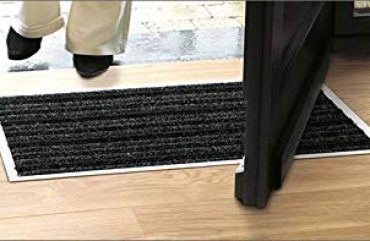How to Care for Your Engineered Floors
1. Cleaning Recommendations:
– For optimal cleaning, use a damp mop or cloth on hardwood or solid engineered flooring. Since the upper wear layer is hardwood, care is similar to that of traditional hardwood floors.
– Wipe in the direction of the wood grain when cleaning to effectively remove stubborn dirt from cracks and crevices.
2. Choosing Cleaning Products:
– Select cleaning products carefully. Always read the entire label to ensure compatibility with your floor’s finishing material.
3. preventative Maintenance:
– Before mopping, sweep or dust your floors to remove dirt and debris, minimizing the risk of floor damage during cleaning.
– Regular sweeping or dusting helps prevent dirt buildup, reducing the need for intensive cleaning or harsh cleaners.
4. Dealing with Spills:
– Address spills promptly. While engineered hardwood is less prone to water damage than solid hardwood, prolonged exposure to liquids can still cause harm.
5. UV Protection:
– Protect your floors from UV damage by using drapes or blinds during peak sunlight hours to shield them from direct sunlight.
6. Furniture and Plant Care:
– Place furniture and houseplants on soft coasters or felt pads to prevent nicks and scratches on your floors.
– Keep pets’ toenails trimmed to avoid floor damage.
7. Maintaining Moisture Levels:
– Regulate the humidity levels in your home throughout the year to preserve the appearance and longevity of your engineered hardwood floors.
8. Electronics and Other Considerations:
– Avoid placing electronics directly on your floors, as the heat they generate can potentially damage the flooring over time.
– Specifically for white plank floors, refrain from using bleach-containing detergents and avoid using well water to prevent potential staining from iron content. Clean white floors regularly to maintain their brightness.
By following these care guidelines, you can ensure your engineered hardwood floors remain beautiful and durable for years to come.

Cleaning Laminate Flooring
1- Do not use steam cleaners or wet mops, which may cause irreparable damage to your floor.
2- Use a damp cloth to blot up spills as soon as they happen. Never allow liquids to stand on your floor.
3- For tough spots such as oil, paint, markers, lipstick, ink, or tar, use acetone/nail polish remover on a clean white cloth. Then wipe the area with a damp cloth to remove any remaining residue.
4- Sweep, dust, or vacuum the floor regularly with the hard floor attachment (not the beater bar) to prevent accumulation of dirt and grit that can scratch or dull the floor finish.
5- Periodically clean the floor with cleaning products made specifically for laminate floor care.
6- Do not wash or wet mop the floor with soap, water, oil-soap detergent, or any other liquid cleaning product. This could cause swelling, warping, delamination, and joint-line separation, and void the warranty.
7- Avoid using steel wool, abrasive cleaners, or strong ammoniated or chlorinated type cleaners.
8- Do not use any type of buffing or polishing machine on your laminate floors.
9- For spots such as candle wax or chewing gum, harden the spot with ice and then gently scrape with a plastic scraper, such as a credit card. Be careful not to scratch the flooring surface.
10- Wipe clean with a damp cloth.
11- A more frequent dust-mopping or vacuuming schedule may be required in very sandy areas such as a beachside home.

Moisture & Hardwood Flooring
Many homeowners are unaware of how easily their beautiful hardwood floors can be damaged by moisture. Excess moisture can cause hardwood flooring to swell and cup, while too little moisture can lead to shrinkage and cracking.
Excess moisture can cause:
- Cupping
- Crowning
- Buckling
- Edge lifts
- Finish issues
Too little moisture can cause:
- Gaps between strips and at the ends
- Surface checking
- Noisy floors
- Loose boards
Monitoring moisture levels in wood flooring is essential. Moisture meters designed for wood and thermo-hygrometers are vital tools for professionals dealing with wood flooring. These instruments help determine if the wood flooring has reached equilibrium moisture content (EMC).
It’s important to note that if excess moisture is detected, it may be prudent to contact a qualified remediation and restoration specialist promptly.

Moisture & Hardwood Flooring
1- Protect your floors with a doormat, it is your floor’s best friend.
2- Avoid using bleach or ammonia on wood laminate floors, as these cleaners can damage the laminate.
3- Laminate flooring is not made from actual wood, so avoid using wood oils like Murphy’s Oil, as they can leave streaks on your laminate.
4- Check the labels on any store-bought products you use to ensure they do not promise a “shiny” surface, as these can leave a waxy buildup that is difficult to remove.
5- Laminate can scratch easily, so refrain from using abrasive cleaners or scrubs that may damage them.
